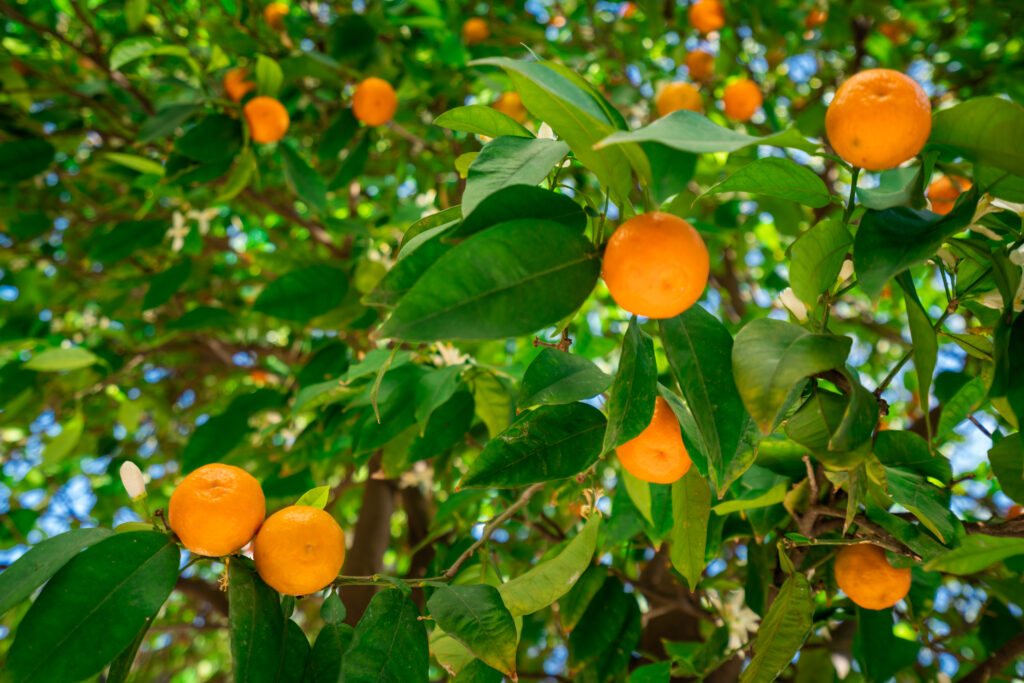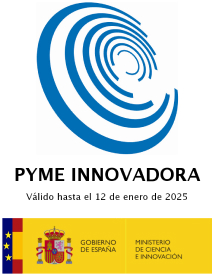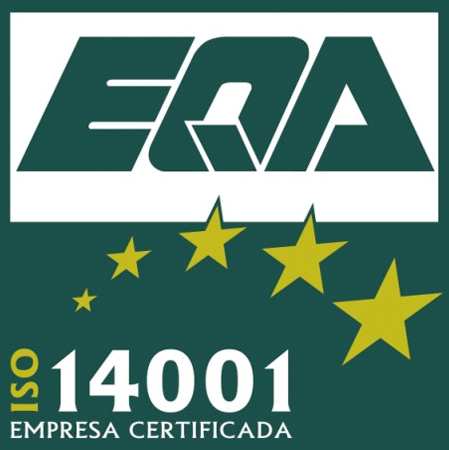Agricultural pests have always accompanied crops, but in recent years, they have developed an alarming capacity for adaptation, becoming an increasing challenge for sustainable agriculture. Factors such as climate change, agricultural intensification, and resistance to chemicals have favored their proliferation. Among the most problematic are the aphids, whitefly and psyllids, which affect a wide variety of vegetable and fruit crops.
Aphids, whitefly, and psyllids: why are they increasing?
The evolution of pests is not a coincidence. Their growth is the result of a combination of interconnected factors that affect both the environment and agricultural practices, promoting their proliferation.
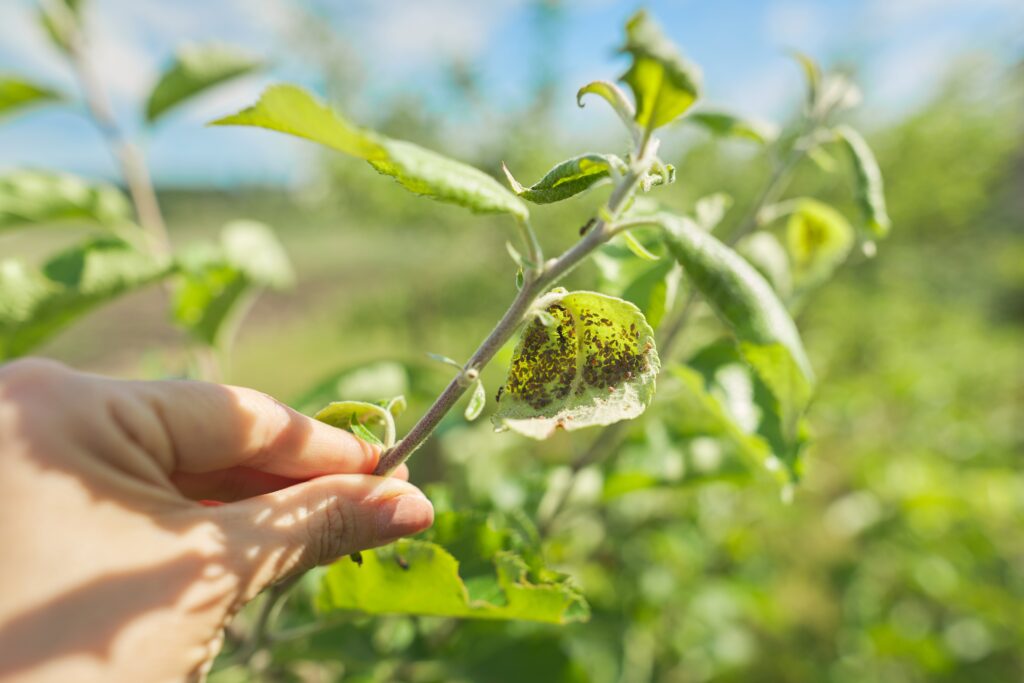
Factors driving the evolution of pests
1. Resistance to conventional treatments
The prolonged or inappropriate use of traditional insecticides has led to resistant populations, making control more difficult and reducing the effectiveness of conventional treatments. This has forced the search for sustainable alternatives that do not generate waste and respect beneficial fauna.
2. Climate change and environmental conditions
The rise in temperatures has driven the development of more annual generations of these pests, extending their period of activity and favoring their reproduction even during times that were previously free from infestations. In temperate climates, some species have shifted from being a seasonal problem to a constant threat.
Additionally, conditions of high humidity and heat, especially in greenhouses, create an ideal environment for the proliferation of pests such as aphids and whitefly.
3. Reduction of natural predators
The intensive use of non-selective chemicals has reduced populations of beneficial insects, such as ladybugs and parasitoids, which previously helped maintain the natural balance of these pests.
4. Globalization and geographic distribution
Globalization has facilitated the spread and evolution of pests to regions where they were previously uncommon, expanding their geographic reach.
Impact on crops and agricultural production
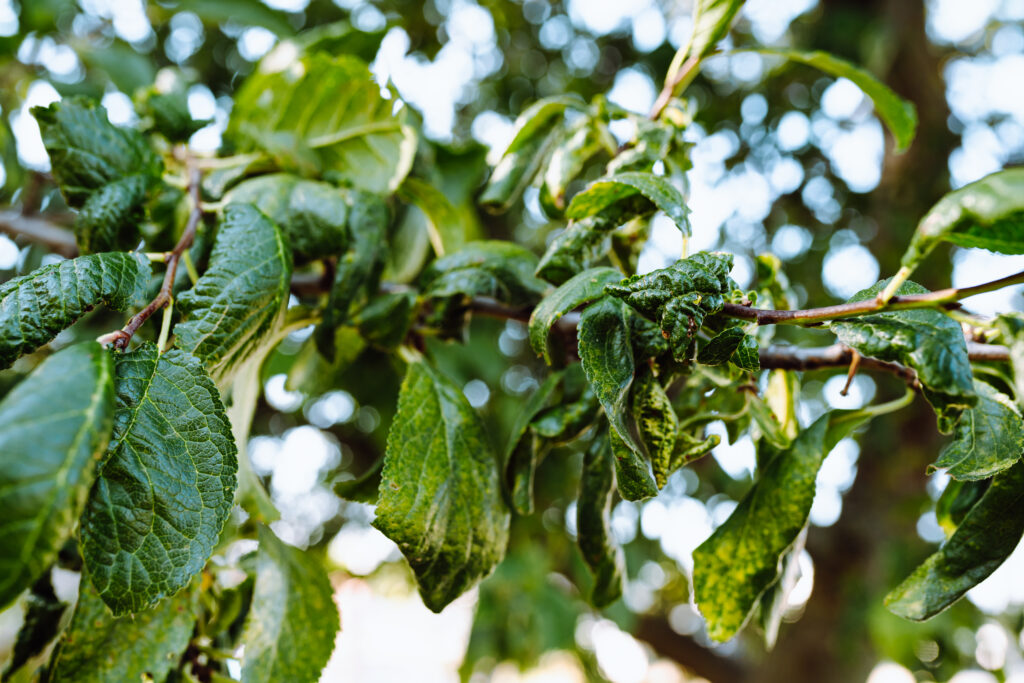
Pests represent a serious threat to agriculture, not only because of the economic losses they cause but also because of their impact on the environmental balance. By sucking sap and secreting honeydew, they affect leaves, fruits, and vital organs of plants, significantly reducing agricultural yields. To control their spread, as discussed in the previous section, the intensive use of pesticides is often resorted to, and this can destabilize agroecosystems and harm beneficial species such as pollinators and natural predators.
The effects of these pests on agriculture are devastating:
- Aphids: they feed on sap and secrete honeydew, weakening the plant, promoting the growth of fungi such as sooty mold, and transmitting viruses.
- Whitefly: it sucks sap and also produces honeydew, creating an environment conducive to fungi that reduce photosynthesis and damage the plant.
- Psyllid: it primarily affects fruit trees such as pear, weakening young shoots, reducing production, and, like the others, secreting honeydew that facilitates the development of secondary pathogens.
This cumulative damage not only compromises crop productivity but also hinders the sustainability of the agricultural sector, making the use of more responsible and efficient control strategies essential.
How to address the evolution of pests with a sustainable approach
In the face of the growth and adaptation of pests such as aphids, whitefly, and psyllids, it is essential to adopt other strategies that ensure effective control without compromising the environmental balance. To achieve this, it is key to coordinate different strategies that minimize the impact on crops and reduce reliance on traditional chemical products. Only in this way will it be possible to confront the evolution of pests and move towards a more efficient and environmentally respectful production model.
1. Monitoring and early detection
Constant observation of crops is important to act in time. The installation of sticky traps and the use of advanced sensors allow for the detection of pests before they become uncontrollable, facilitating a more precise and efficient intervention.
2. Use of residue-free products
Natural and residue-free solutions have become a key tool in sustainable pest management. These formulations not only allow for effective crop protection but also comply with increasing regulatory requirements and the demand from consumers who prioritize residue-free foods.
In this context, Altinco Grinward® stands out as an innovative solution. It is a contact insecticide formulated with 20% paraffin oil, specially designed to efficiently combat aphids, whitefly, and psyllids. Its mode of action is threefold:
- It works by blocking the mobility of pests and causing their death by asphyxiation (anoxia).
- It damages the insect cuticle, causing dehydration.
- It creates a physical barrier that hinders egg laying and the development of new generations.
Additionally, Altinco Grinward® is approved for a wide range of crops and is certified for use in organic farming, which enhances its value as a tool for producers seeking sustainable solutions aligned with new European regulations. Its use helps maintain control over these pests without causing resistance or harming beneficial fauna, thus protecting biodiversity and the health of the agroecosystem.
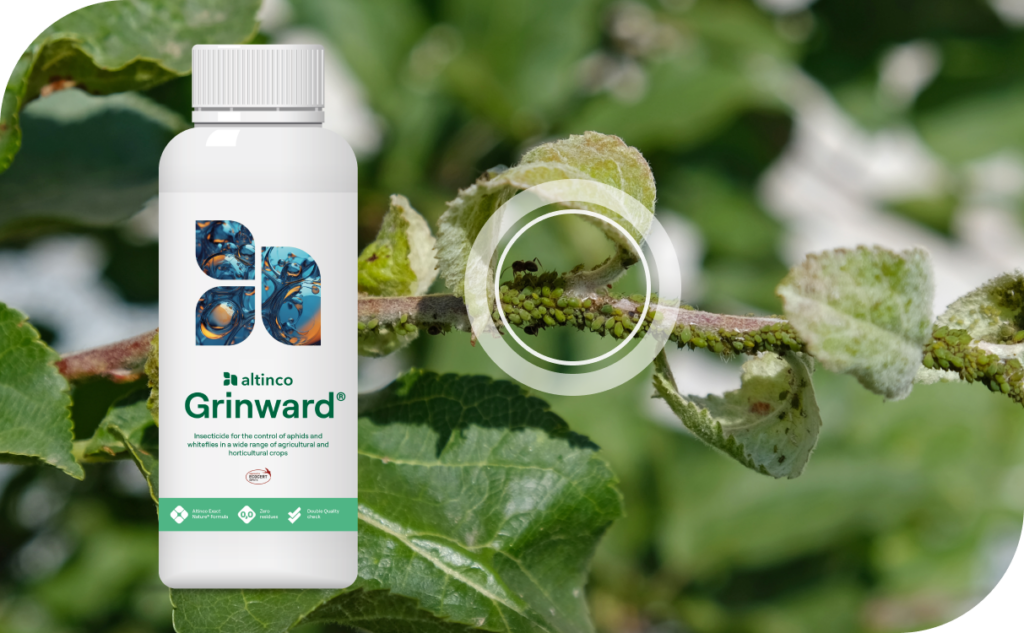
3. Promotion of biodiversity
The introduction of beneficial insects promotes natural control and helps halt the evolution of pests. This approach, promoted in organic farming, allows for the creation of balanced ecosystems where natural predators regulate the populations of harmful insects.
4. Application of combined strategies
The success in pest management lies in the combination of different strategies: monitoring, biological control, and the use of effective natural products.
The Integrated Pest Management (IPM) integrates cultural practices such as weed removal and crop rotation with the rational use of plant protection products and the promotion of natural predators.
On the other hand, the development of genetically resistant crops to certain pests reduces the need for chemical treatments, contributing to more sustainable agriculture.
A sustainable approach to the evolution of pests
The increase in pests such as aphids, whitefly, and psyllids is the result of multiple factors, including climate change, intensive agricultural practices, and globalization. This trend presents a growing challenge for agriculture, as it compromises the productivity and quality of crops.
However, it is possible to address this challenge by adopting a more sustainable approach, combining integrated pest management, advanced technology, ecological management, and biotechnology.
The application of sustainable strategies and natural solutions is key to halting the evolution of pests, protecting crops without generating waste, and maintaining ecological balance.
Altinco Grinward® is an innovative solution that contributes to this goal, offering effective control against these pests without generating resistance or harming beneficial fauna.
Betting on sustainable strategies is key to ensuring a more efficient and environmentally respectful agricultural future.
